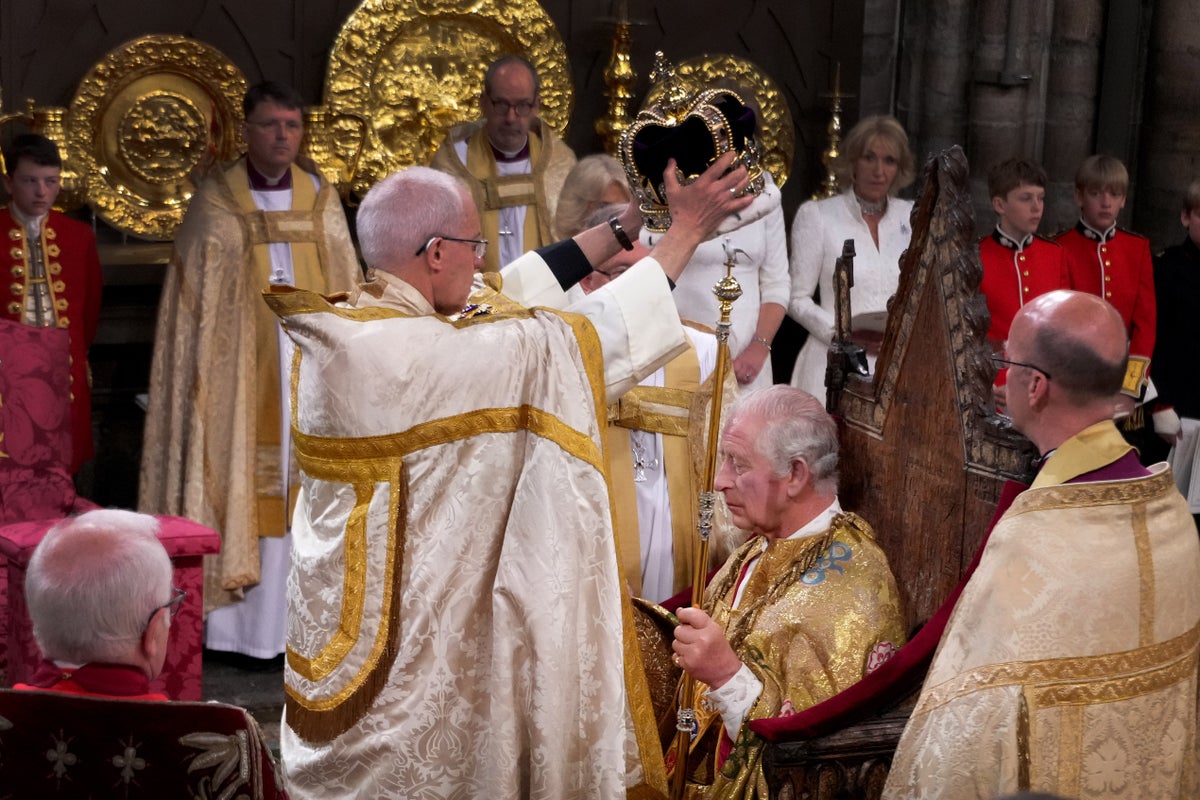
King Charles III and his wife Camilla were crowned during a coronation service at Westminster Abbey on Saturday.
Charles became the 40th reigning sovereign to be crowned at Westminster Abbey, the nation’s coronation church since 1066, as Archbishop of Canterbury Justin Welby placed St Edward’s Crown on his head.
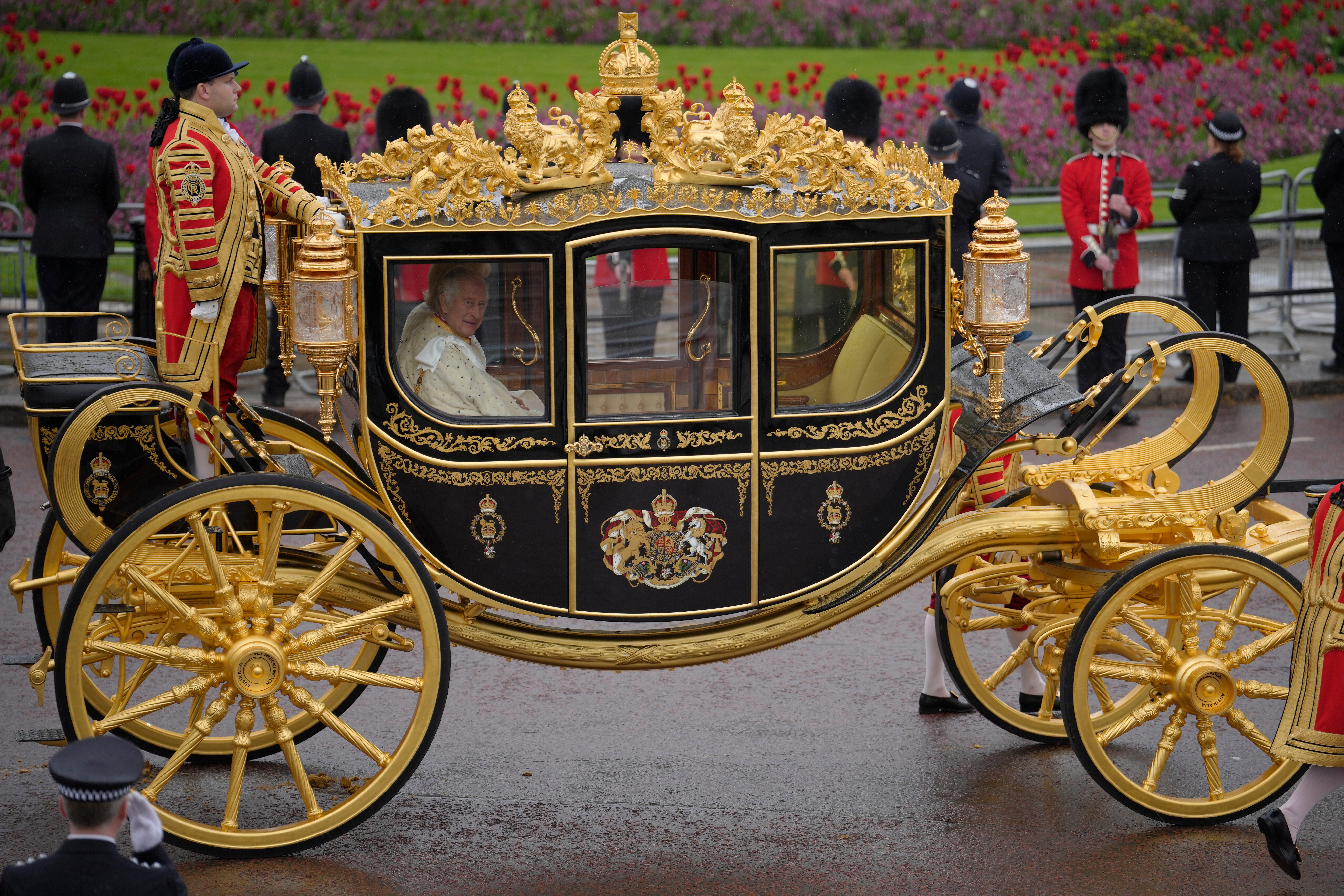
King Charles III and Camilla, the Queen Consort, left Buckingham Palace for the ceremony in the Diamond Jubilee State Coach.
Charles and Camilla personally decided to make their 1.3-mile outward journey – known as the King’s Procession – from Buckingham Palace to Westminster Abbey in the more comfortable Diamond Jubilee State Coach.
The black carriage with gilded decorations is the newest in the Royal Mews.
It has shock absorbers to stop it from swaying, and heating, internal lights and power windows.
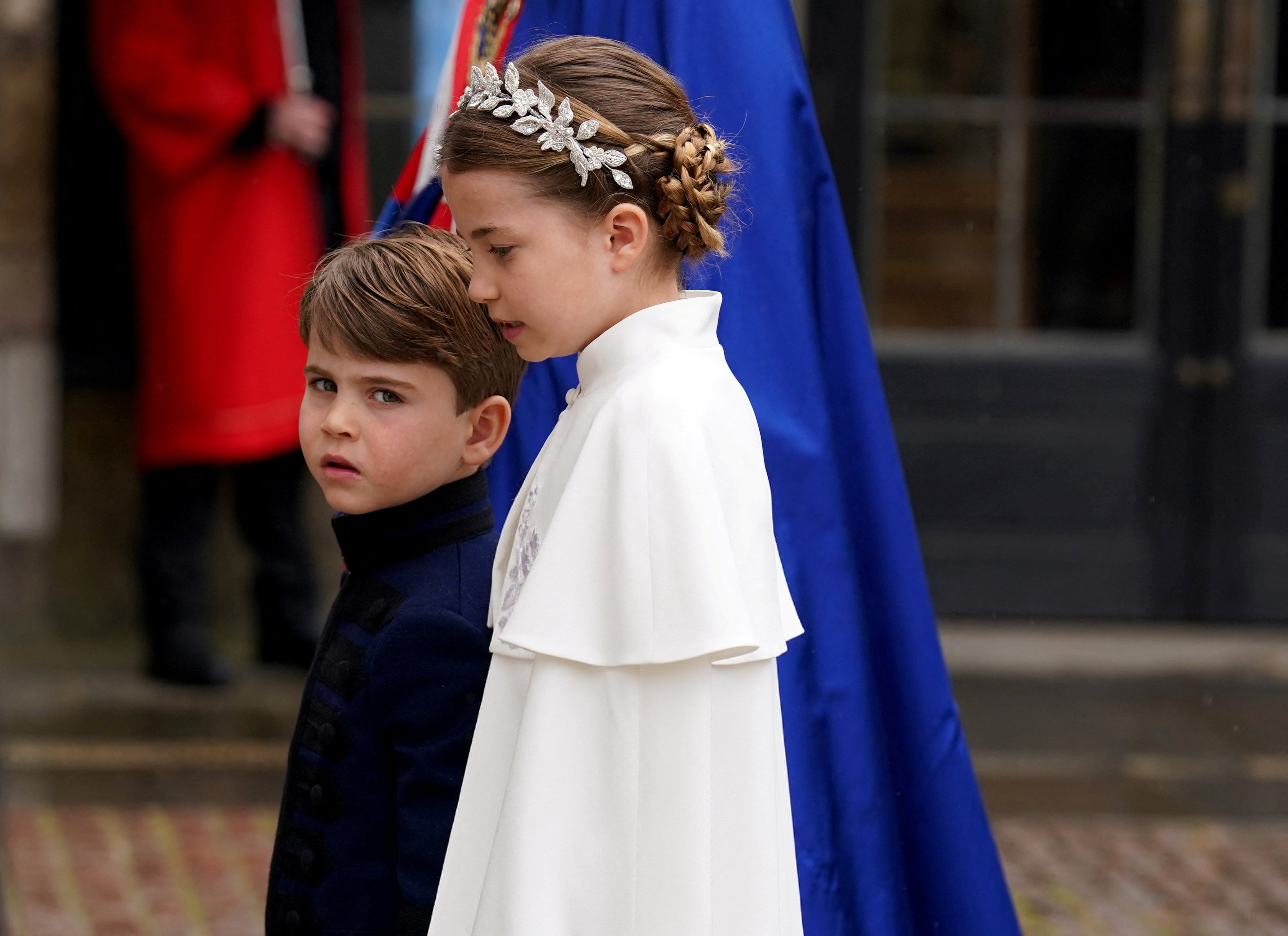
Princess Charlotte and Prince Louis arrived at Westminster Abbey with their parents the Prince and Princess of Wales, walking behind the King and Queen Consort.
Meanwhile, Prince George played a formal role in the ceremony as one of his grandfather King Charles’s pages of honour.
Princess Charlotte wore an Alexander McQueen outfit, matching her mother.
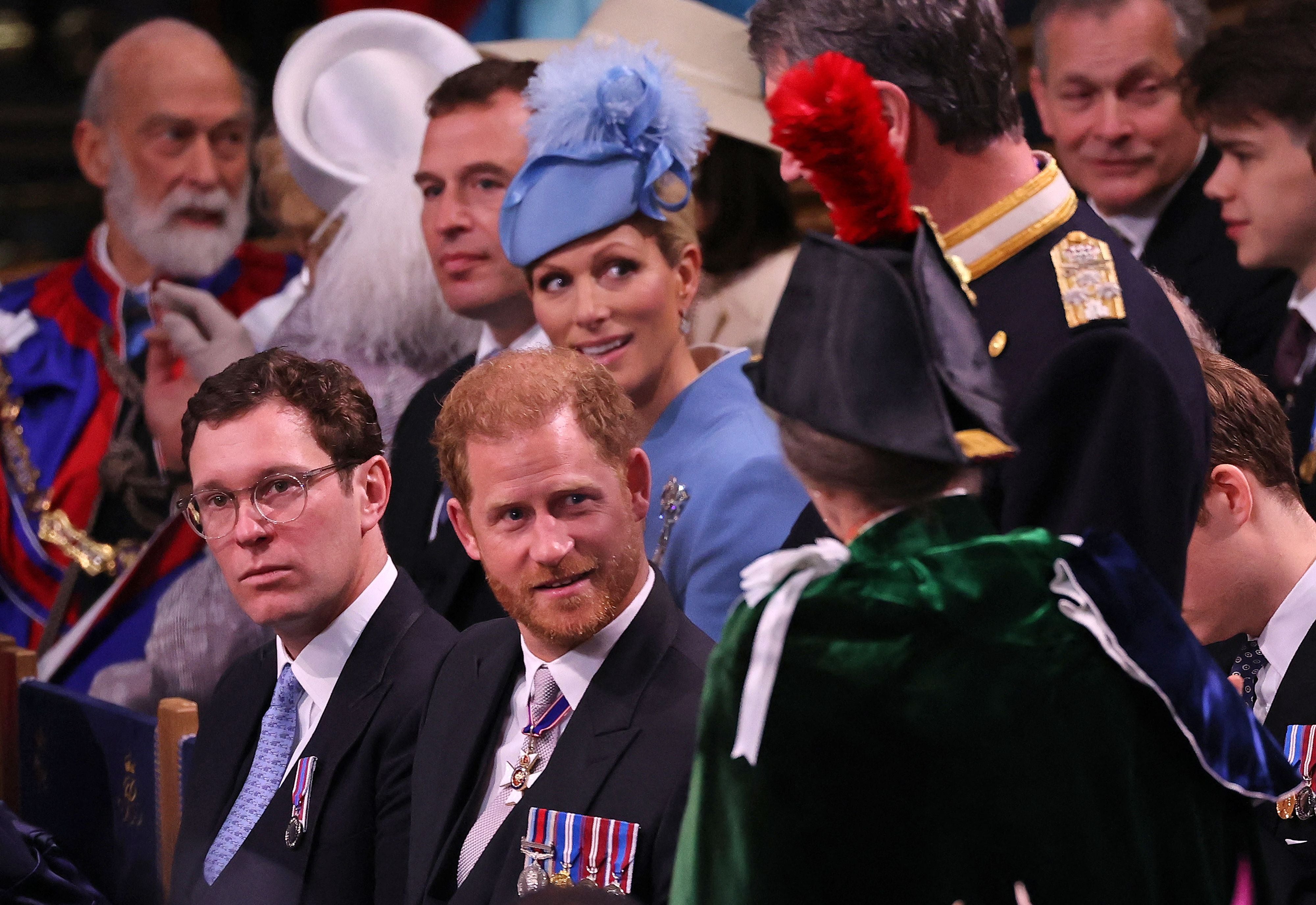
Prince Harry attended the coronation with other members of the Royal Family, but his wife Meghan was absent.
He entered the Abbey with his cousins, Princesses Eugenie and Beatrice, and was seated next to Jack Brooksbank, the husband of Princess Eugenie.
Prince Harry was seen sitting three rows back talking to Princess Anne.
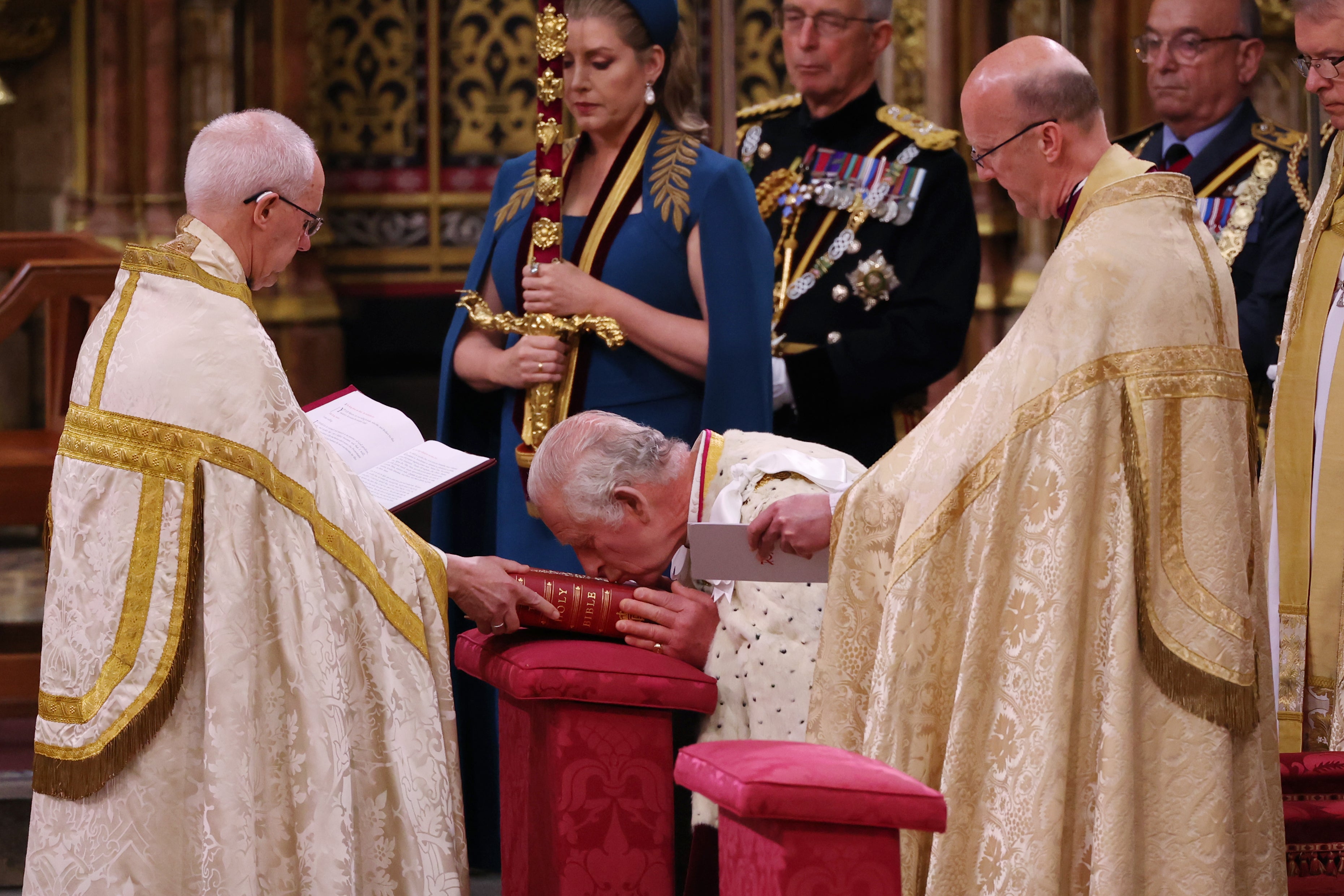
In the lavish ceremony, King Charles III swore an oath “not to be served, but to serve”, and kissed a specially-commissioned red leather-bound Bible, presented to him by the Moderator of the General Assembly of the Church of Scotland.
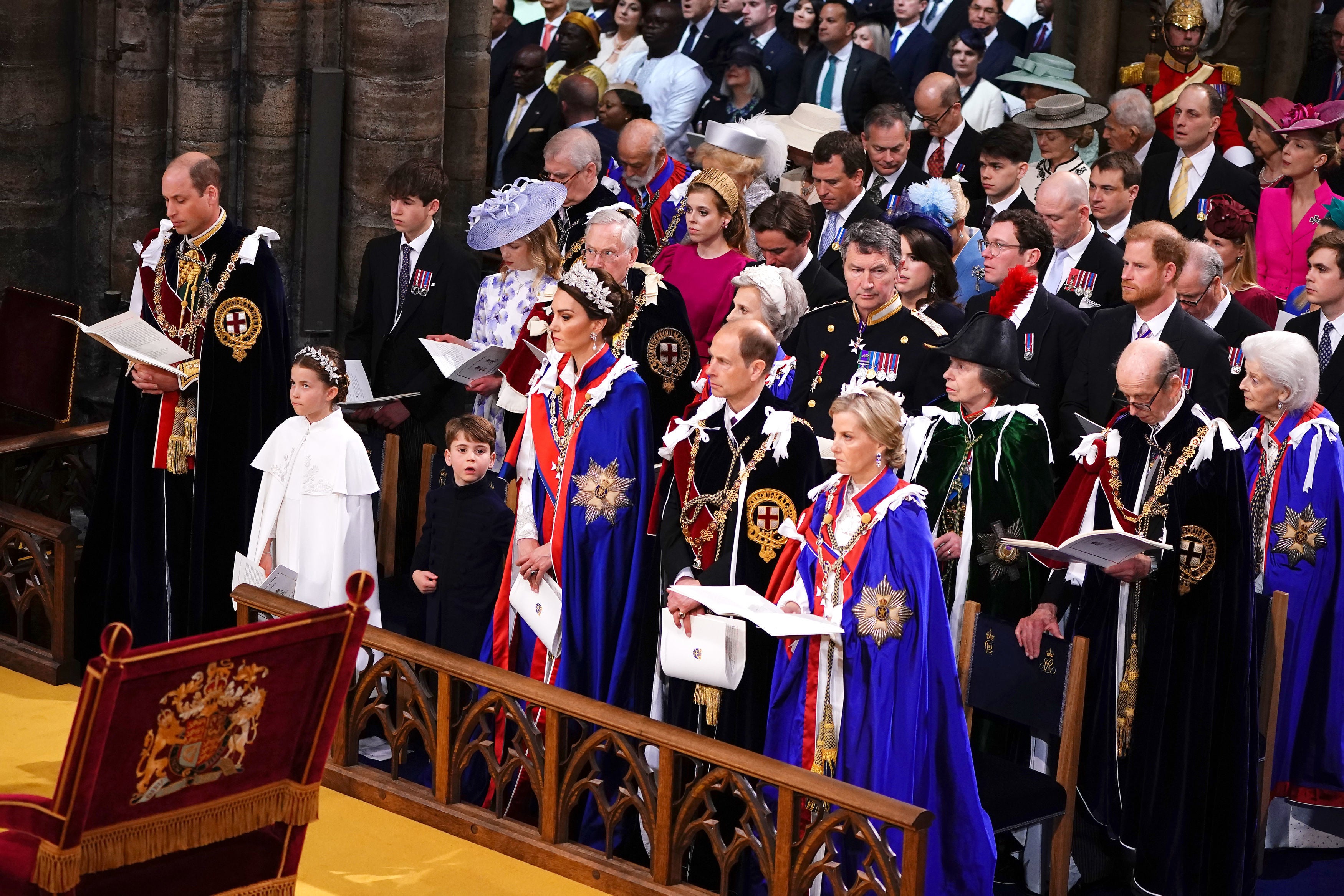
The senior members of the Royal Family, including the Prince and Princess of Wales and their children, and the Duke and Duchess of Edinburgh, were seen sitting in the front row during the ceremony.
The Princess of Wales wore a deep blue Royal Victorian Order mantle edged in scarlet over an Alexander McQueen embroidered ivory silk crepe dress, while the Duchess of Edinburgh wore a Suzannah dress with a Jane Taylor headpiece and Royal Victorian Order Mantle.
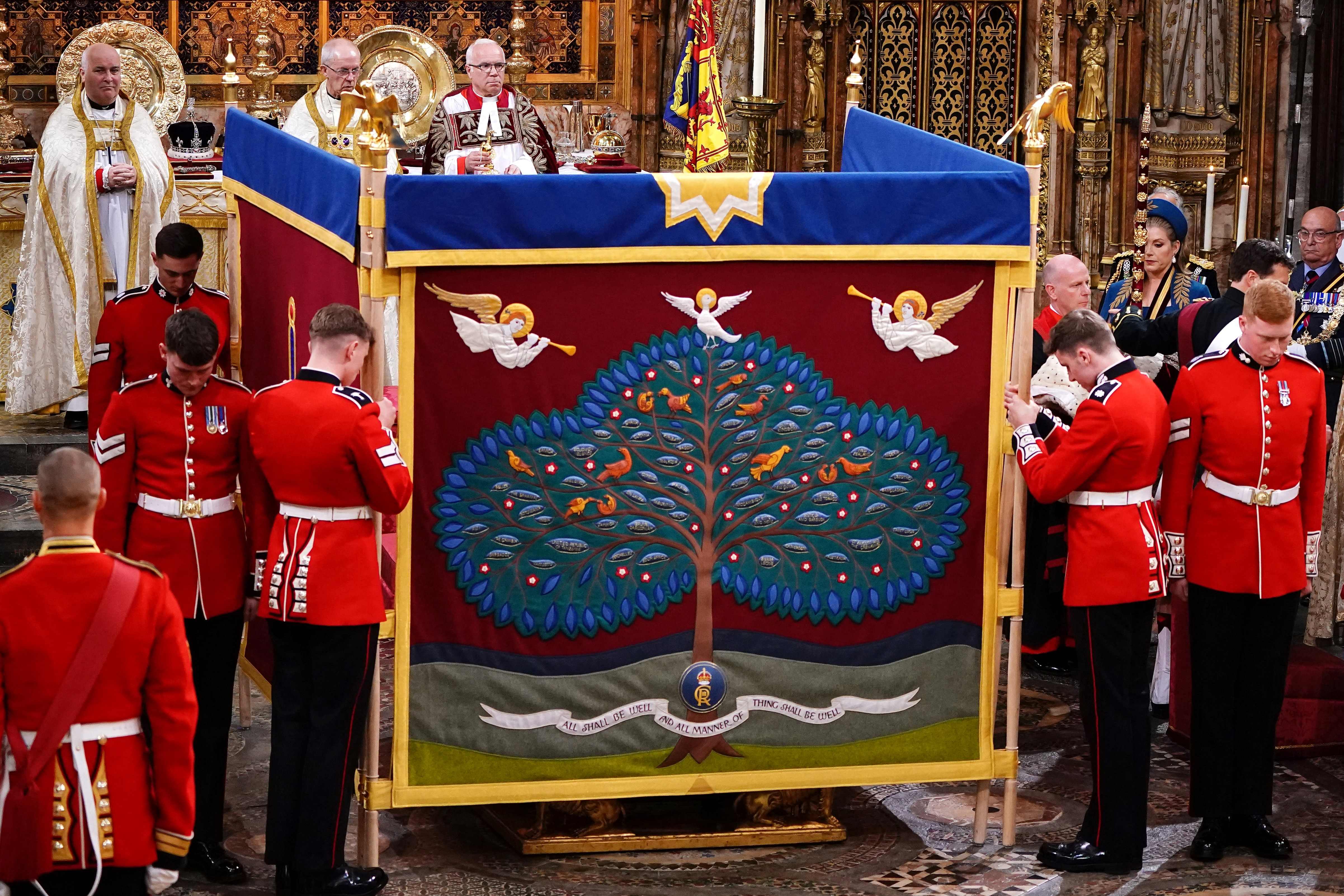
During one of the most sacred moments of the coronation, an anointing screen was erected featuring an embroidered tree celebrating the Commonwealth
The King was anointed with holy oil after removing his crimson Robe of State, and sat in the Coronation Chair – made for King Edward I in around 1300.
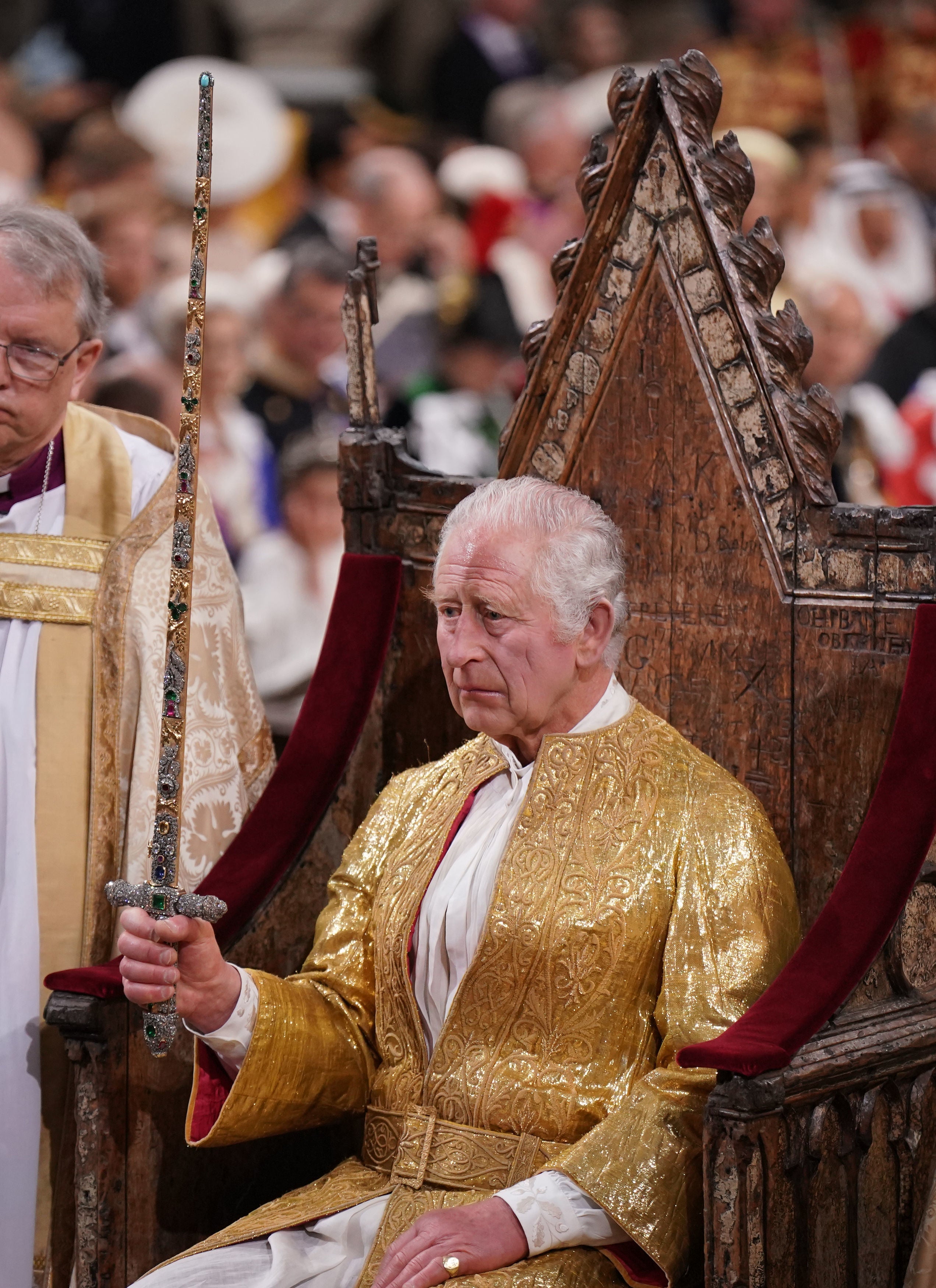
King Charles III was then presented with The Jewelled Sword of Offering.
The sword is blessed by the archbishop and was presented to the King by Lord President of the Council Penny Mordaunt – the first time the sword has been carried and presented by a woman.
The intricate tapered sword, made for George IV’s 1821 coronation, has a hilt encrusted with diamonds, rubies and emeralds and a scabbard decorated with jewelled roses, thistles and shamrocks.
It symbolises royal power and the monarch accepting his duty and knightly virtues.
It is placed in the King’s right hand, then clipped onto his girdle and eventually unclipped.
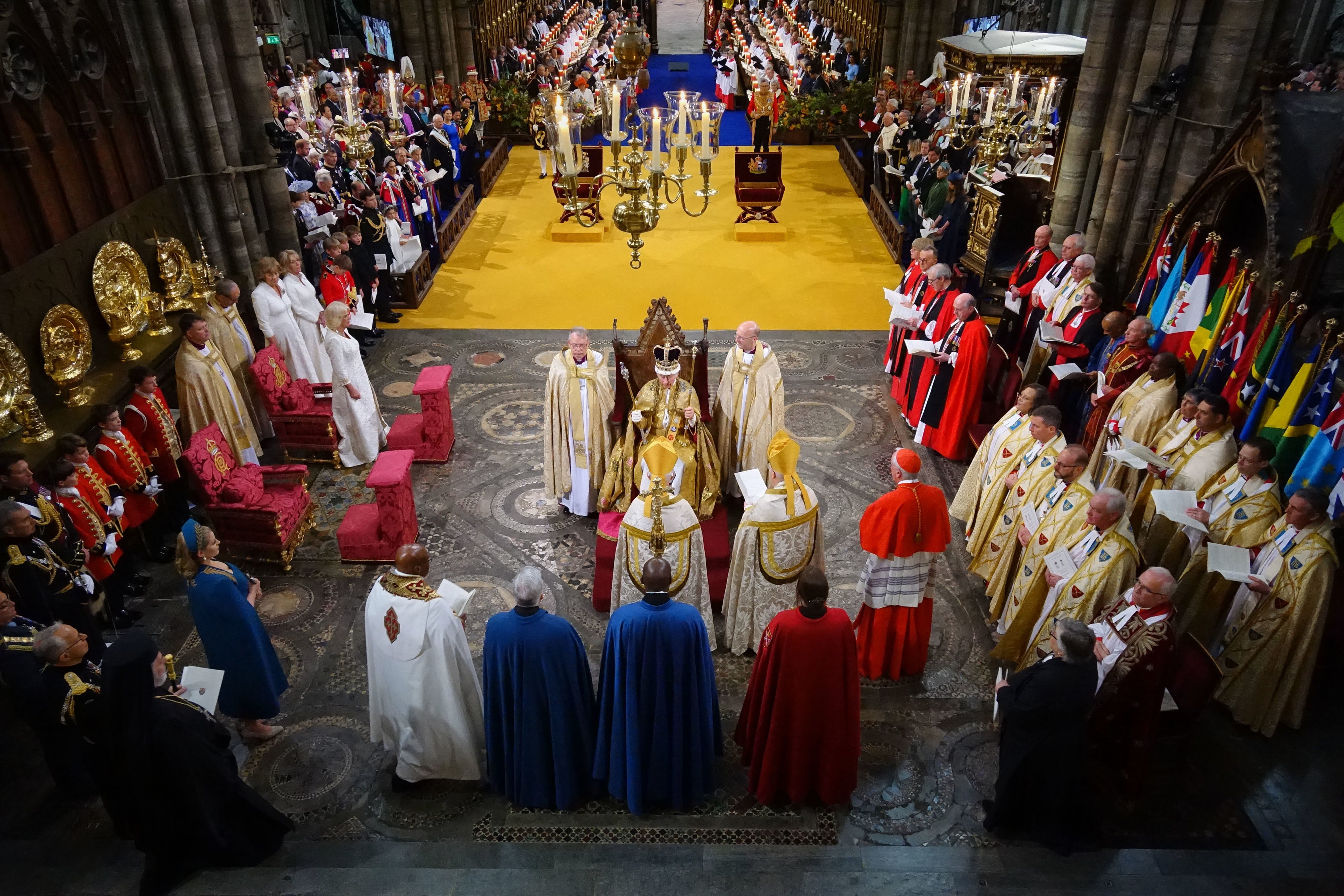
The King was crowned with St Edward’s Crown by the Archbishop of Canterbury.
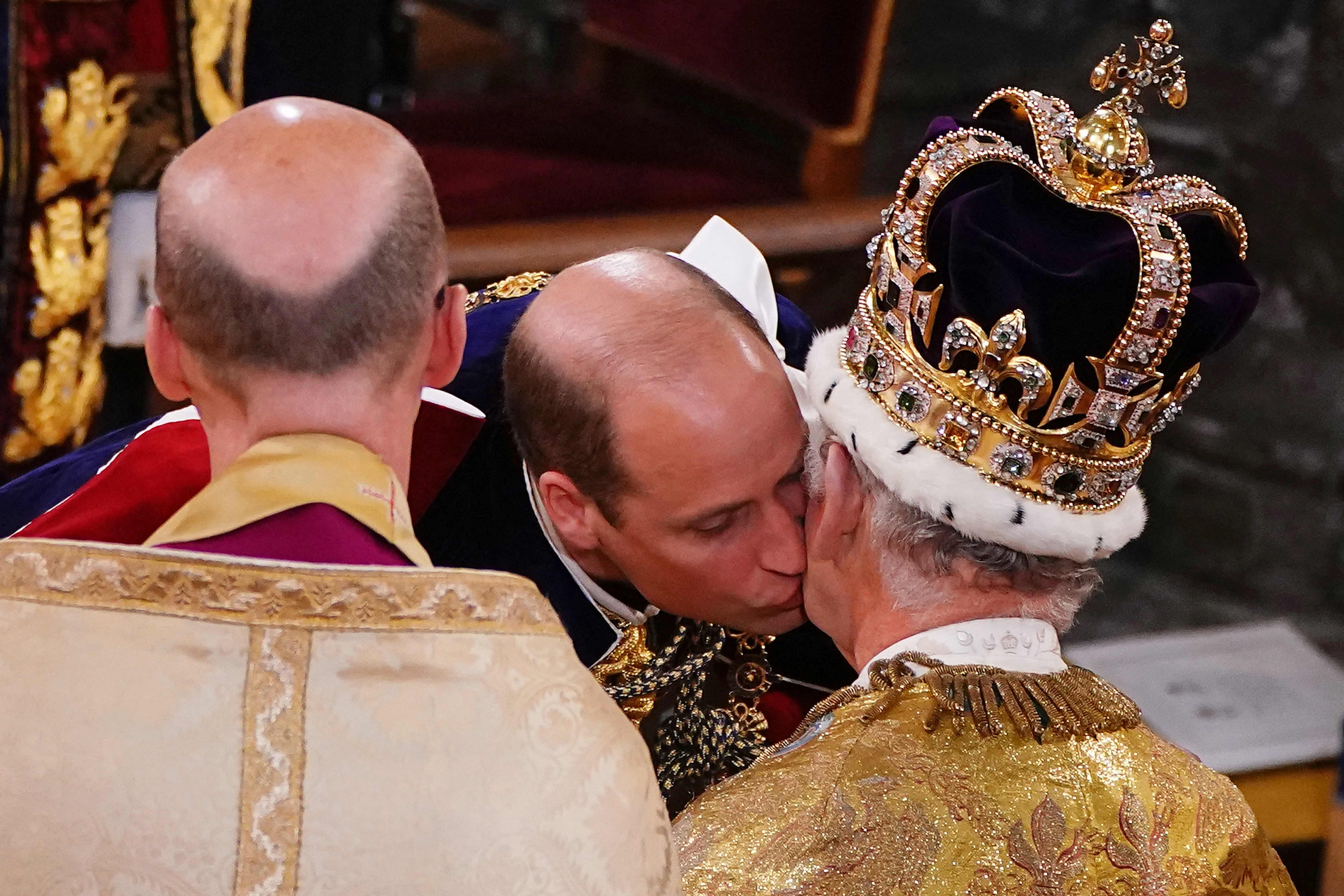
The King’s eldest son, the Prince of Wales, paid homage and kissed his father on the cheek after he was crowned in today’s coronation.
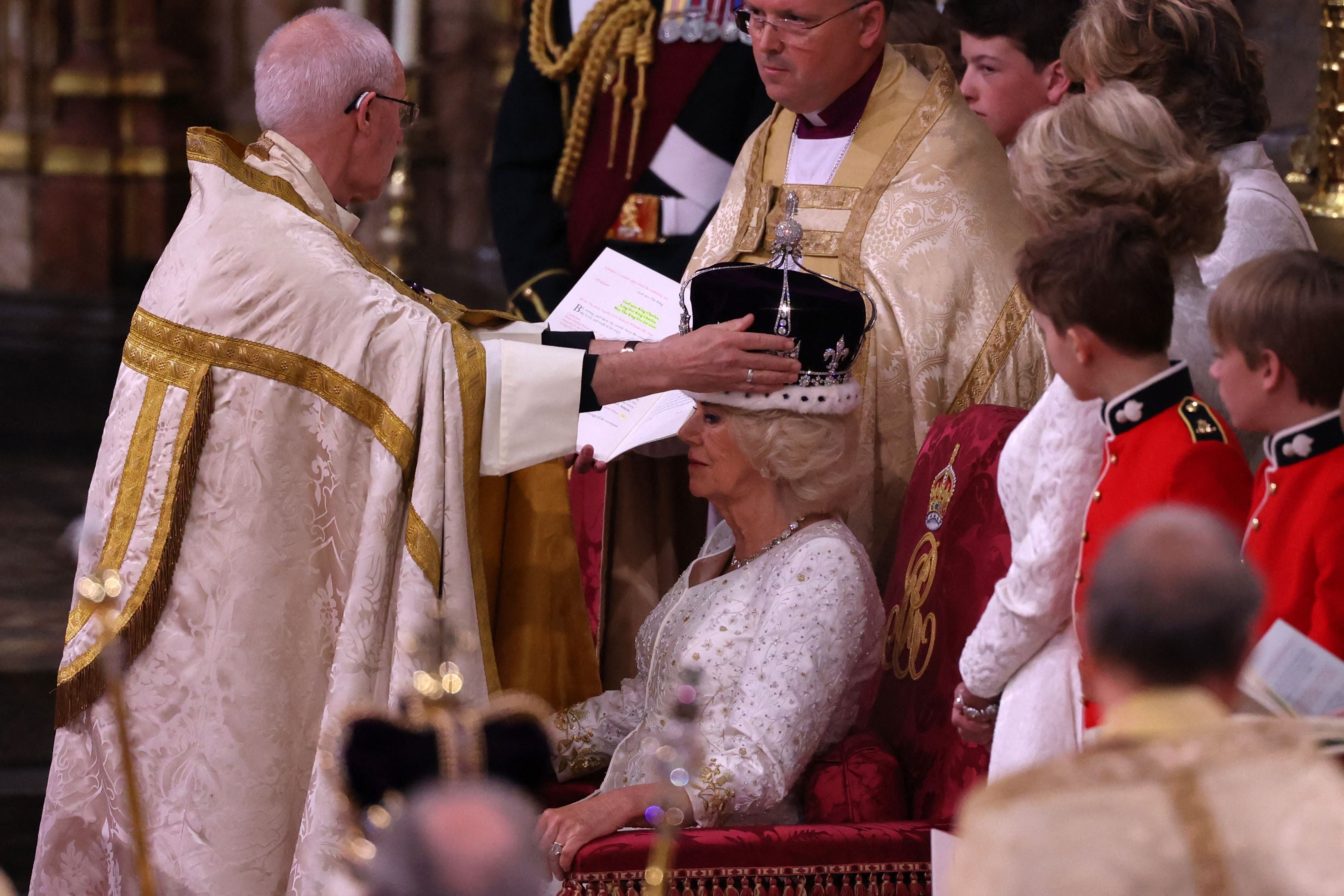
Camilla was also crowned as Queen during the ceremony.
The Archbishop of Canterbury Justin Welby placed a modified version of Queen Mary’s Crown onto the head of the Queen Consort.
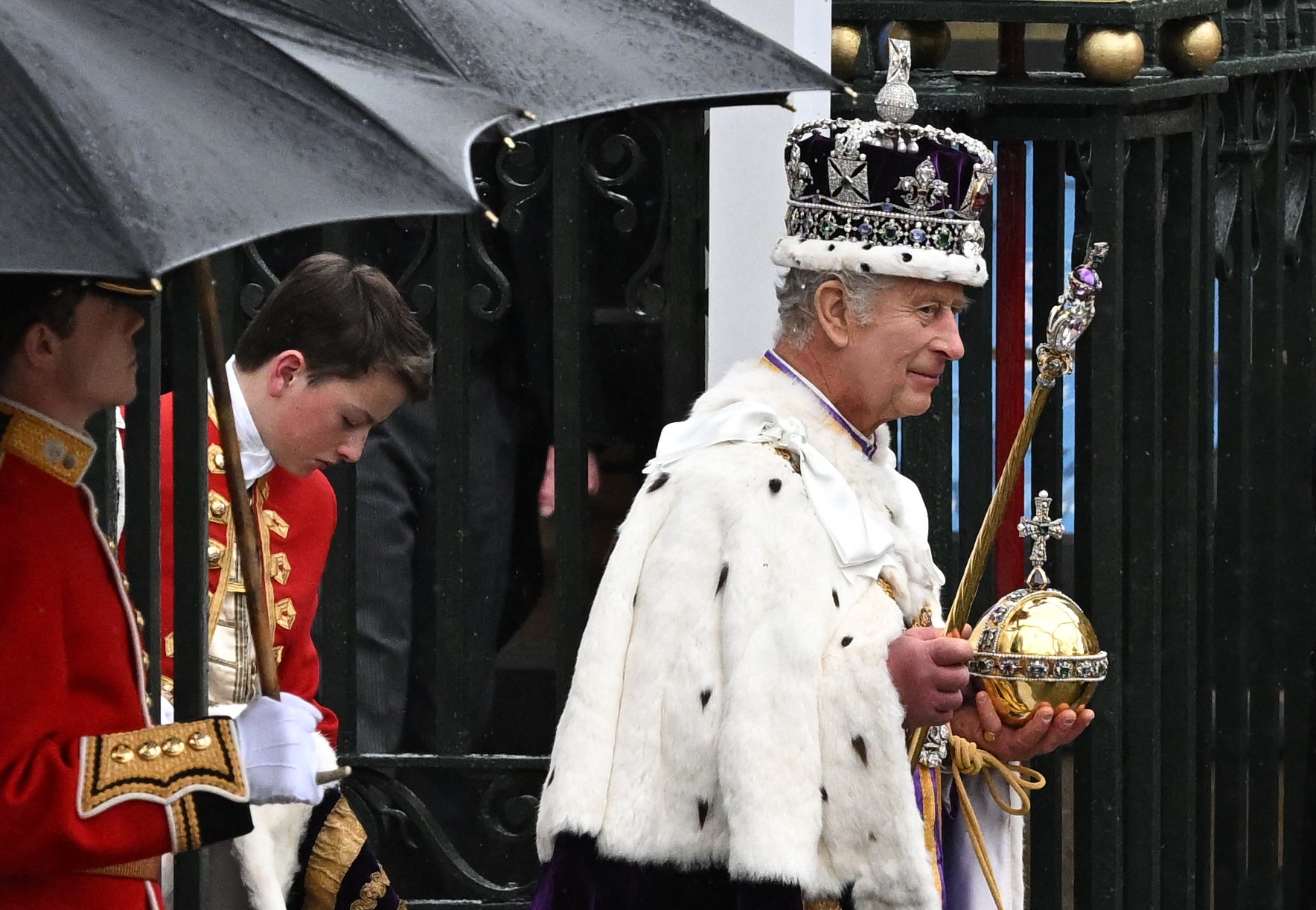
King Charles left Westminster Abbey wearing the Imperial state Crown and carrying the Sovereign’s Orb to begin the Coronation procession back to Buckingham Palace.
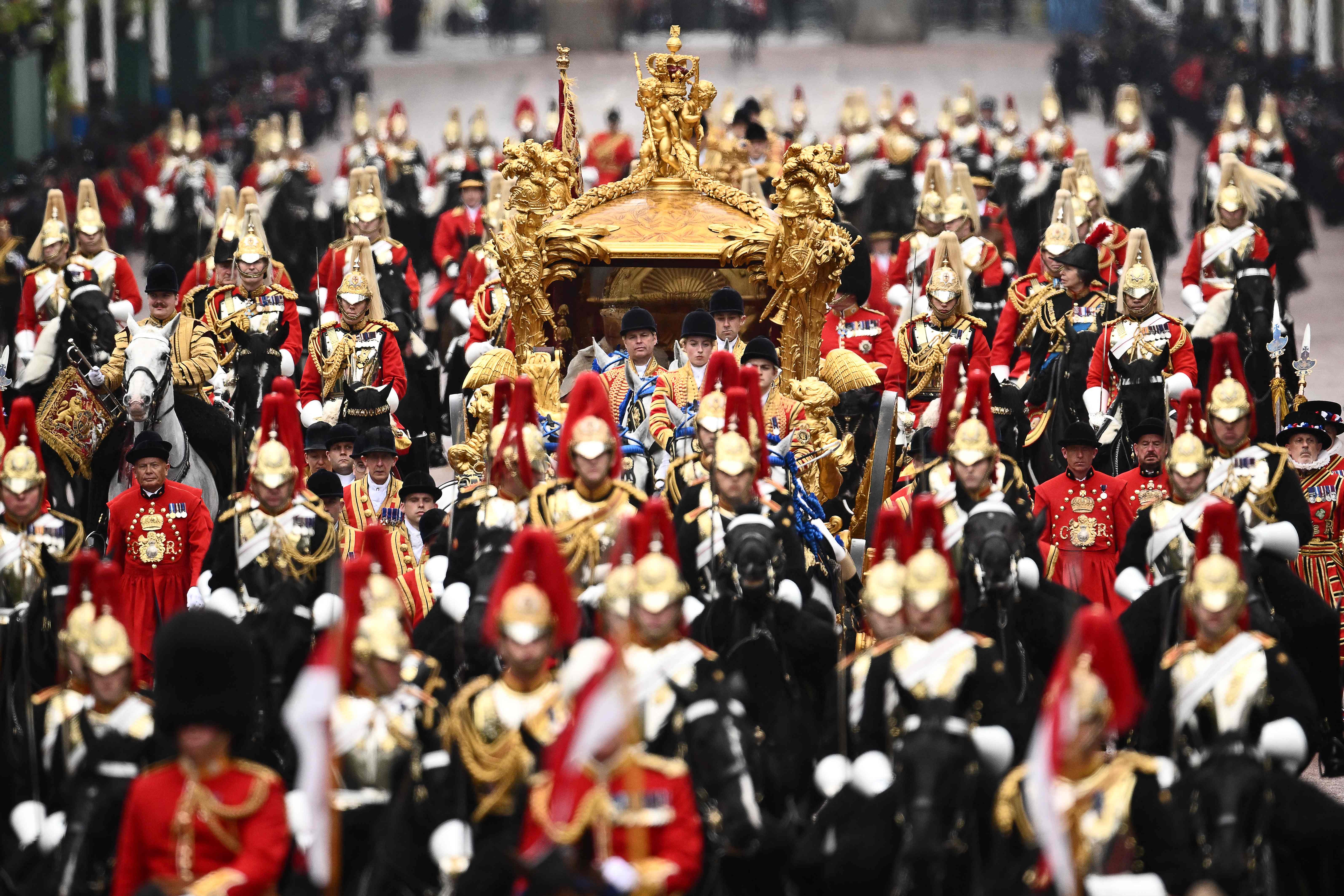
Queen Camilla and King Charles III travelled in the Gold State Coach back to Buckingham Palace, waving to the crowds during the journey.
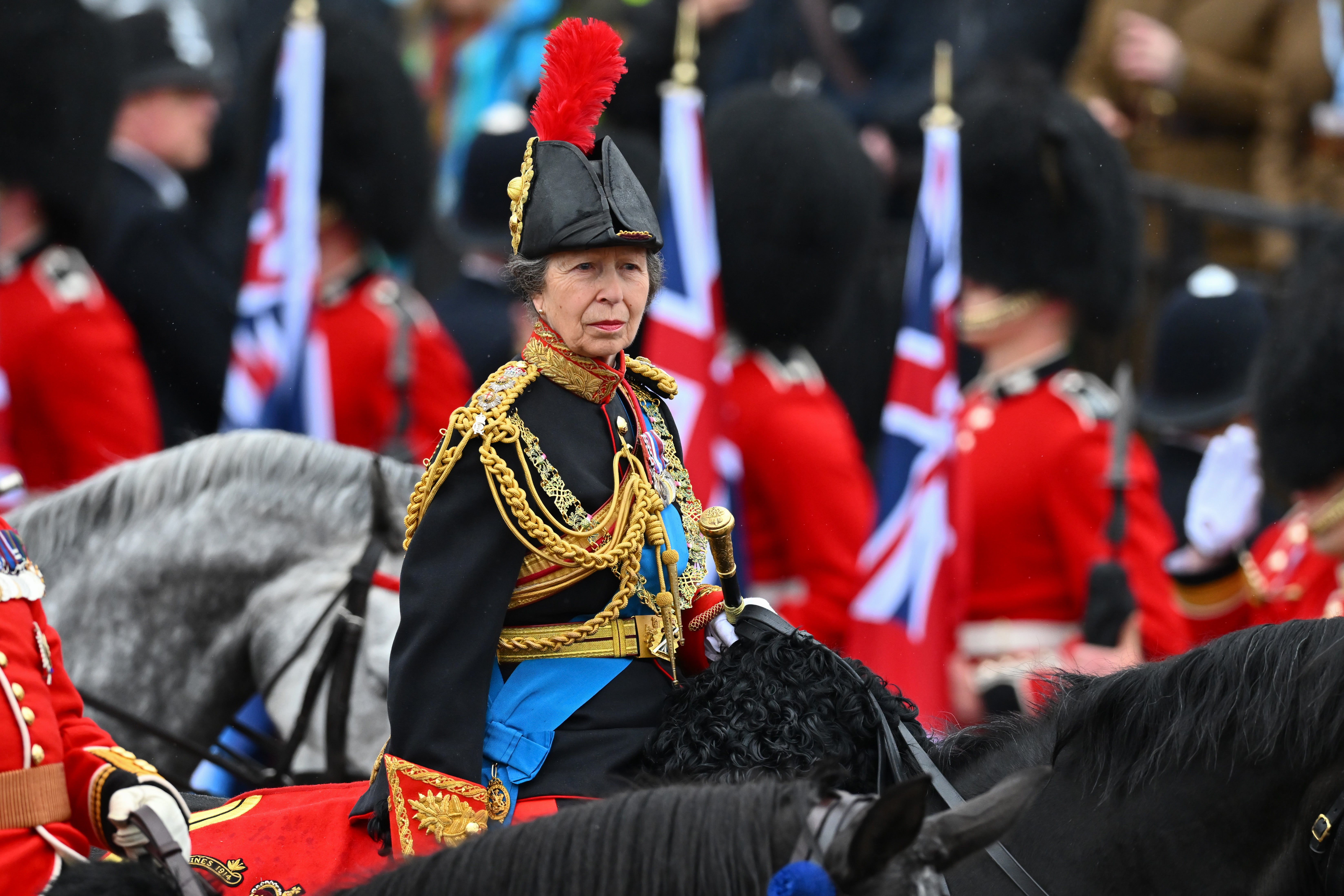
Princess Anne rode on horseback behind the gold state coach carrying the newly crowned King and Queen Consort as they travelled down The Mall.
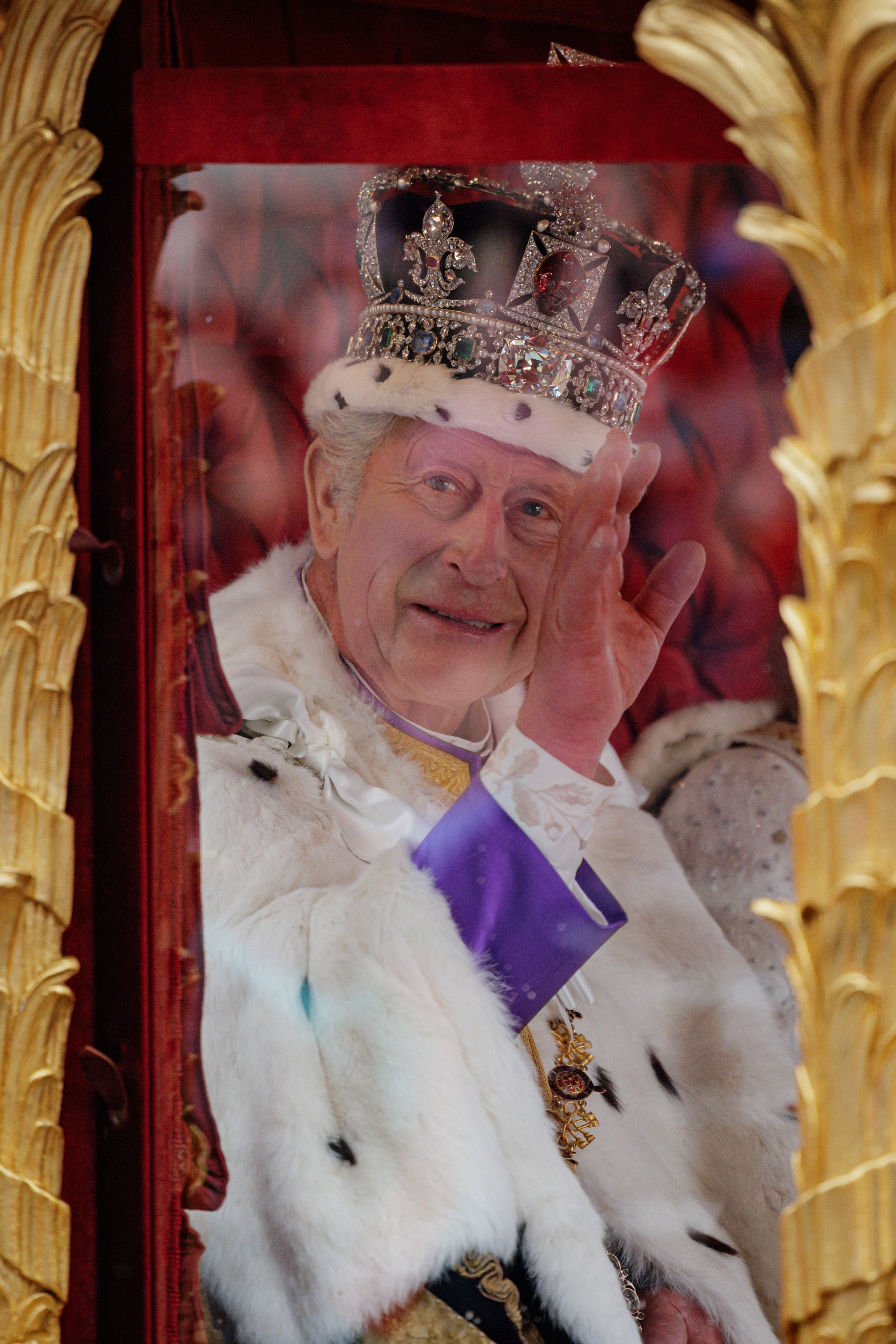
King Charles acknowledged the crowds, waving to onlookers.
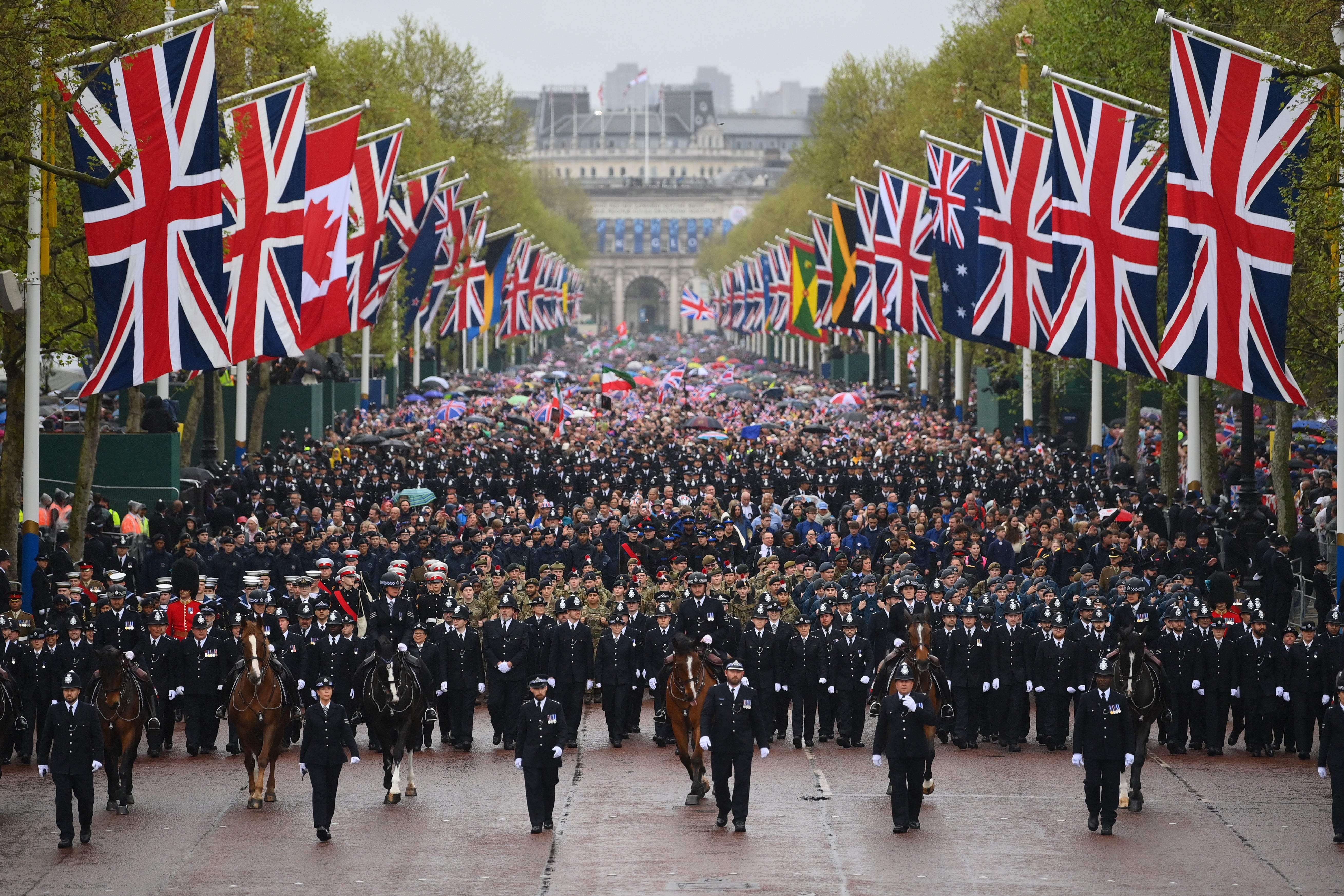
The military procession made its way down The Mall towards Buckingham Palace.
The event was the military’s largest ceremonial operation since Queen Elizabeth II’s 1953 coronation, with 9,000 servicemen and women deployed and 7,000 of these performing ceremonial and supporting roles.
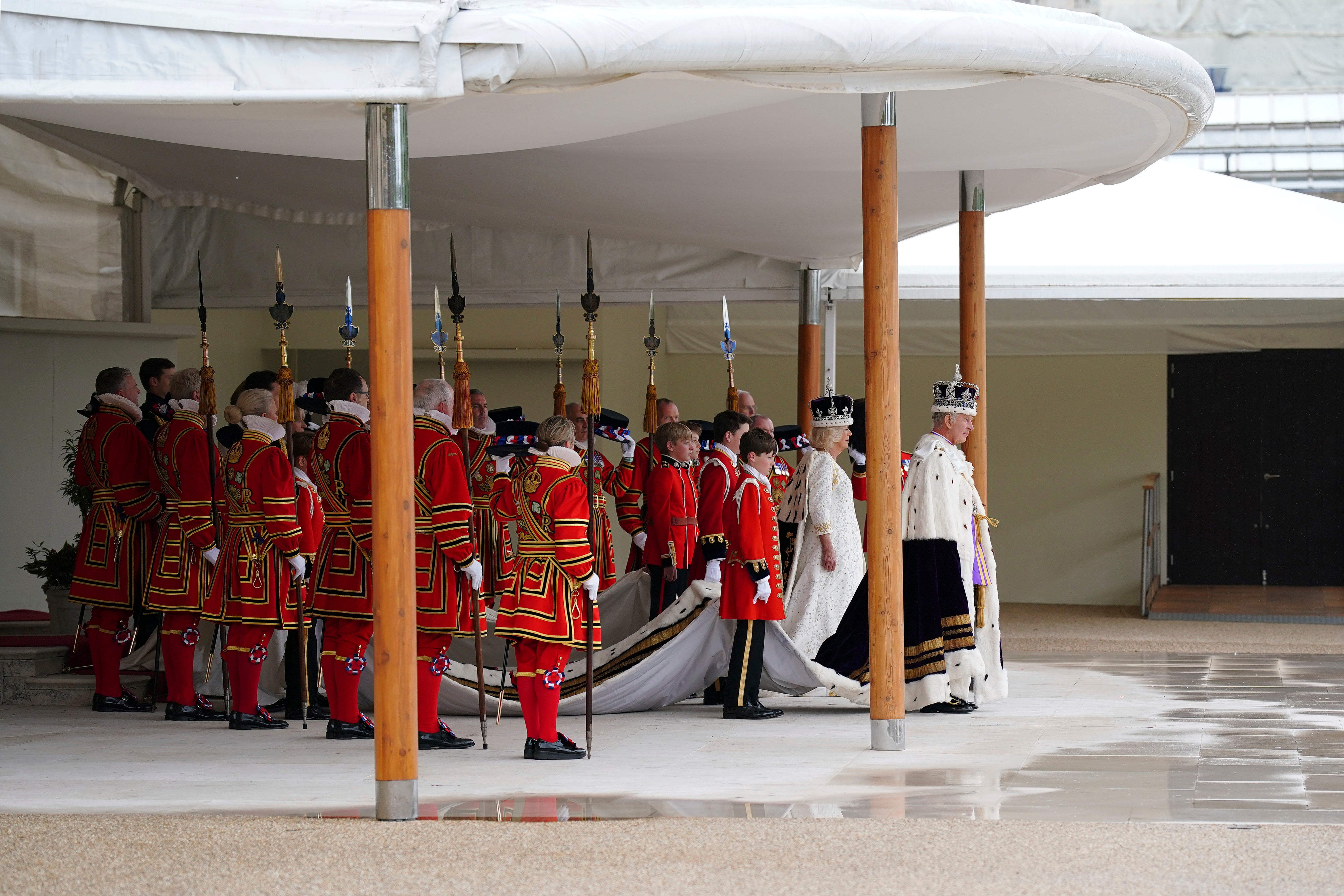
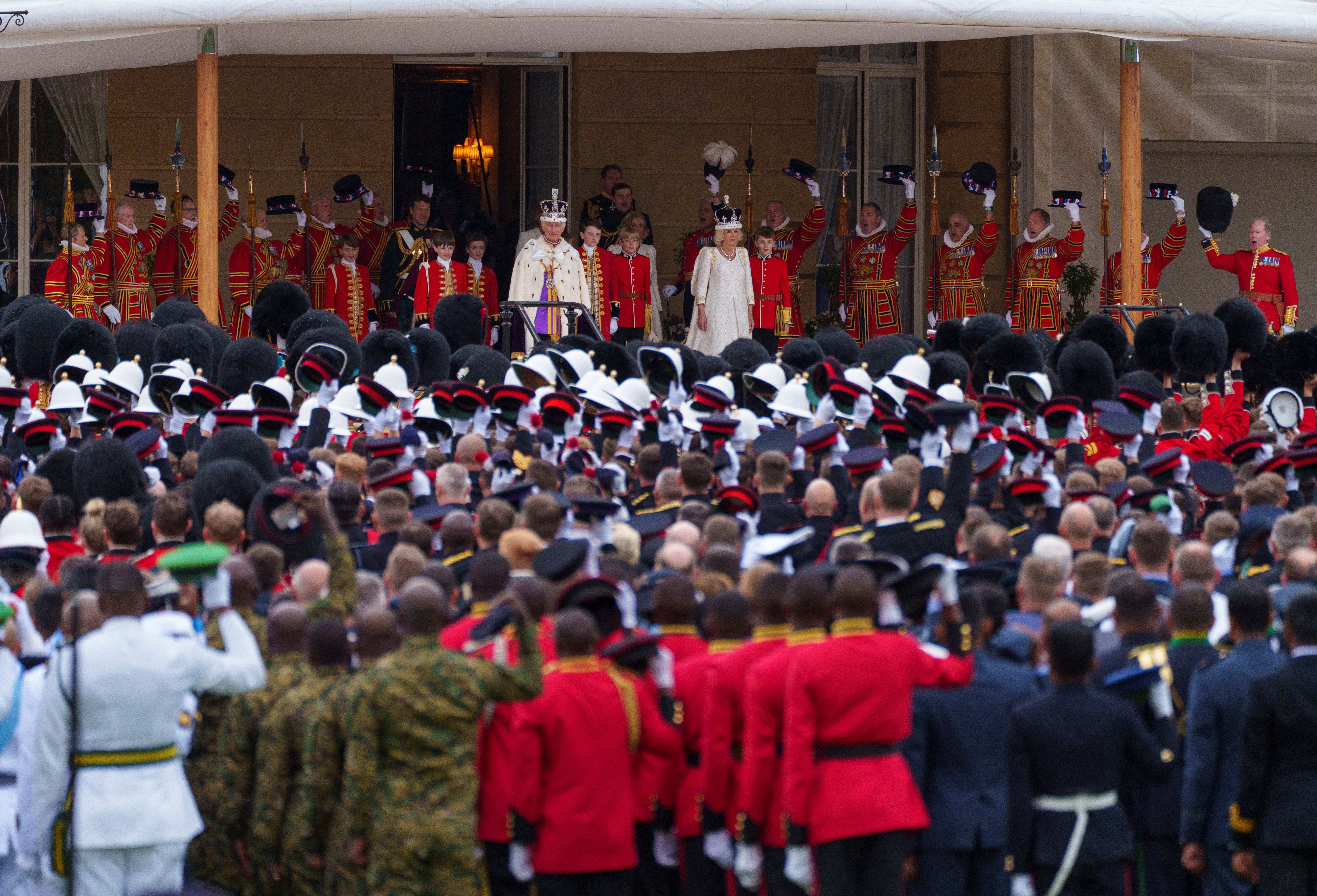
King Charles and Queen Camilla arrived at Bukingham Palace to receive a royal salute from members of the military.
The King and Queen received three cheers from around 4,000 troops. The salute was given by the United Kingdom and Commonwealth Armed Forces who had been on parade and guided the King and Queen back to the palace from Westminster Abbey.
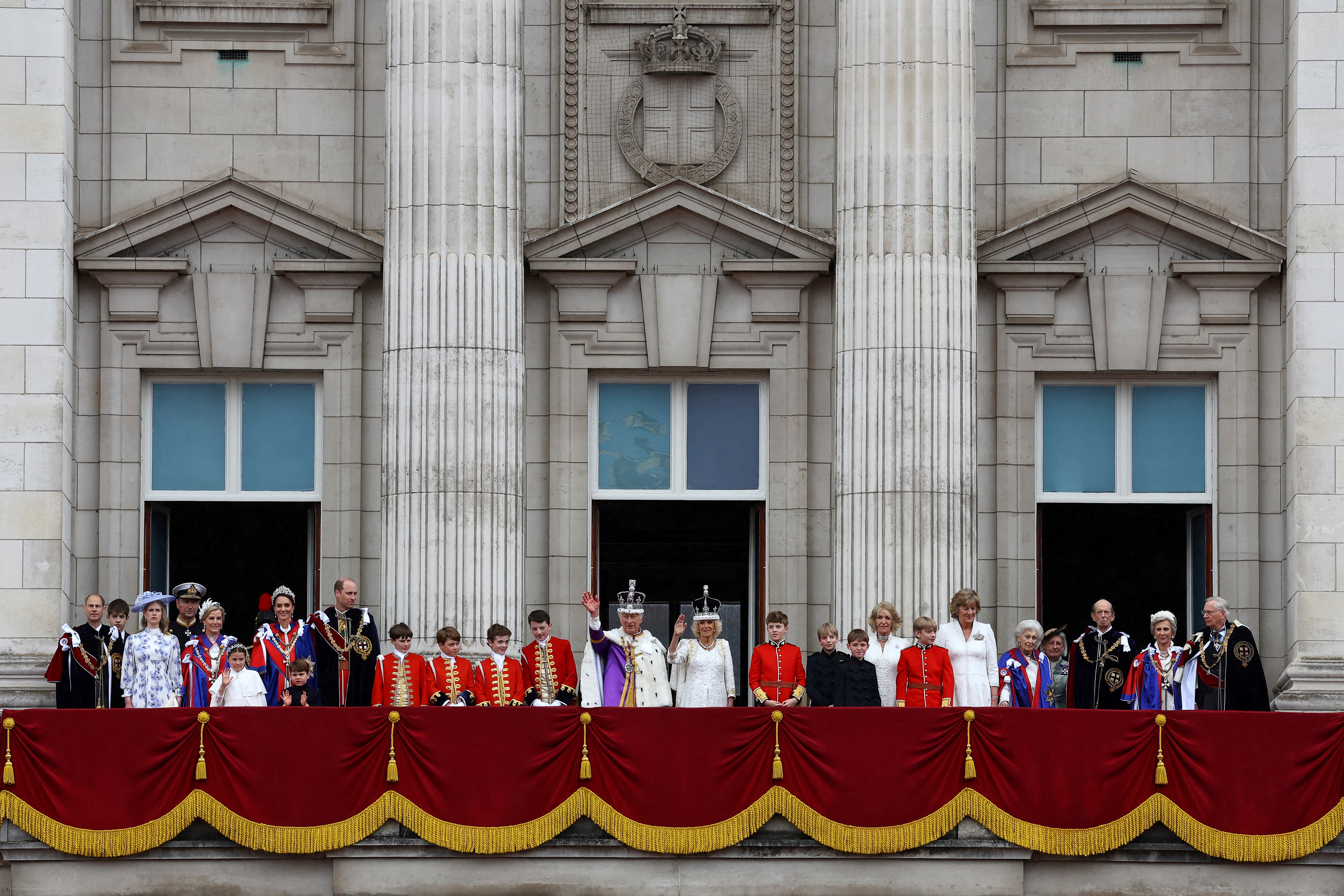
King Charles and Queen Camilla were accompanied by other members of the Royal family on the Buckingham Palace balcony following the coronation ceremony.
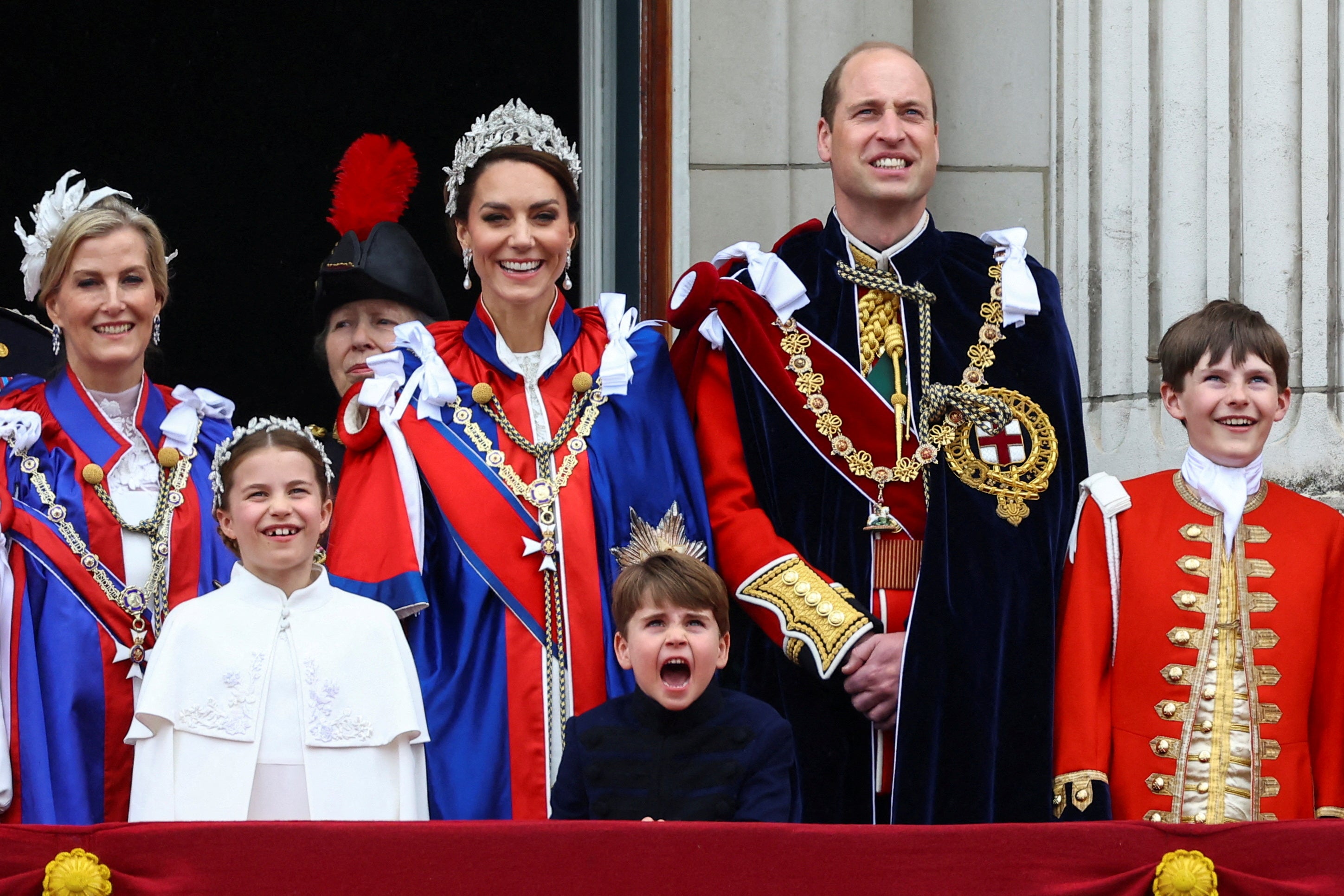
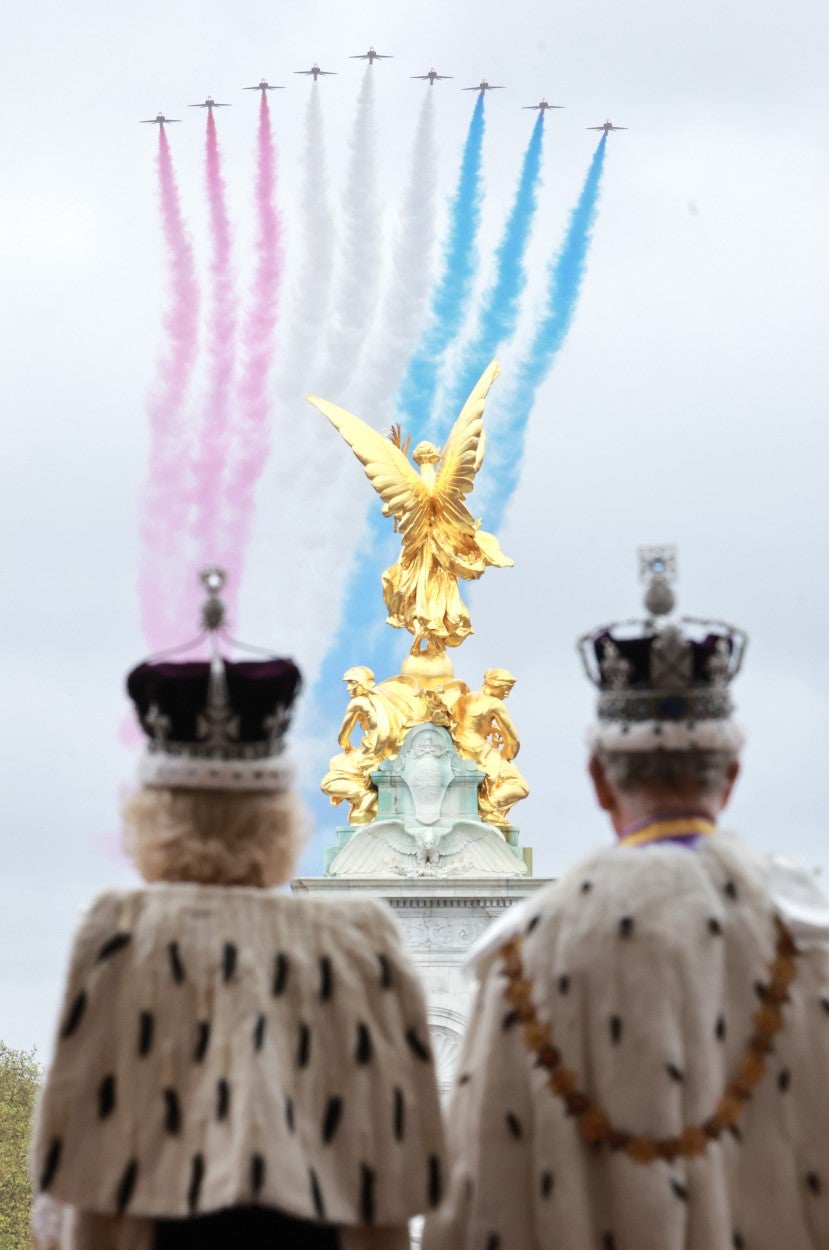
The downpours on the Mall meant that Charles’s military flypast was scaled back, with just helicopters and the Red Arrows making an appearance.
Sophie, Duchess of Edinburgh, Anne, Princess Royal, Prince William, Catherine, Princess of Wales, and their children Princess Charlotte and Prince Louis watched the flypast, along with the King and Queen.
The original plans had involved a total of 60 aircraft, including a group of Spitfires, Hurricanes and a Lancaster.
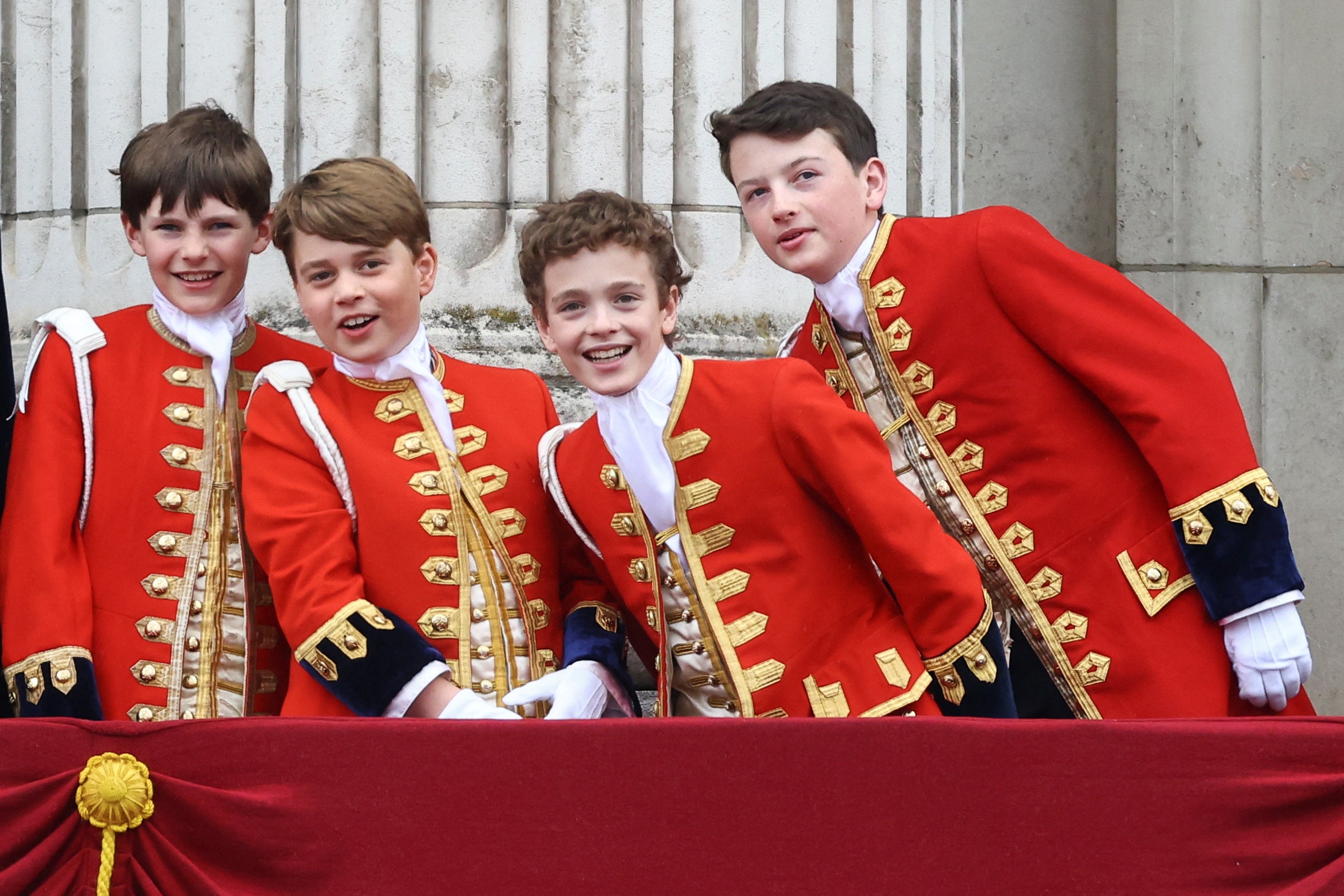
The Royal Family were joined by Prince George and the other Pages of Honour on the balcony to watch the flypast.
The King’s pages were: his grandson George; Nicholas Barclay, 13, grandson of Sarah Troughton, one of the Queen’s Companions; Lord Oliver Cholmondeley, 13, son of the Marquess of Cholmondeley, also known as filmmaker David Rocksavage, and a friend of the Prince of Wales; and Ralph Tollemache, 12.
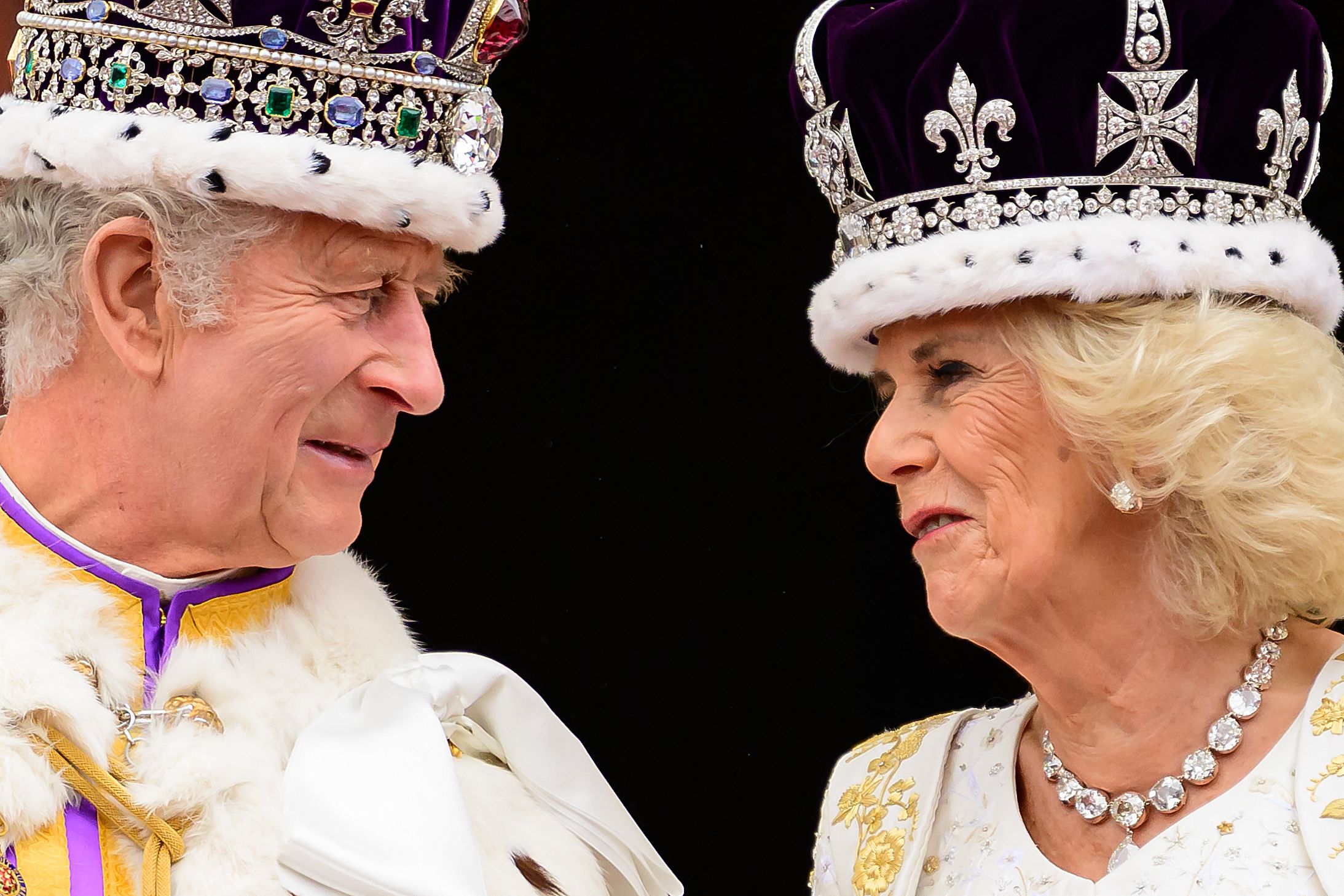
King Charles III and Queen Camilla looked happy and relaxed as they stood on the Buckingham Palace balcony.
The King and Queen then enjoyed a post-coronation lunch with the royal family and Camilla’s nearest and dearest at Buckingham Palace after completing their public duties.







